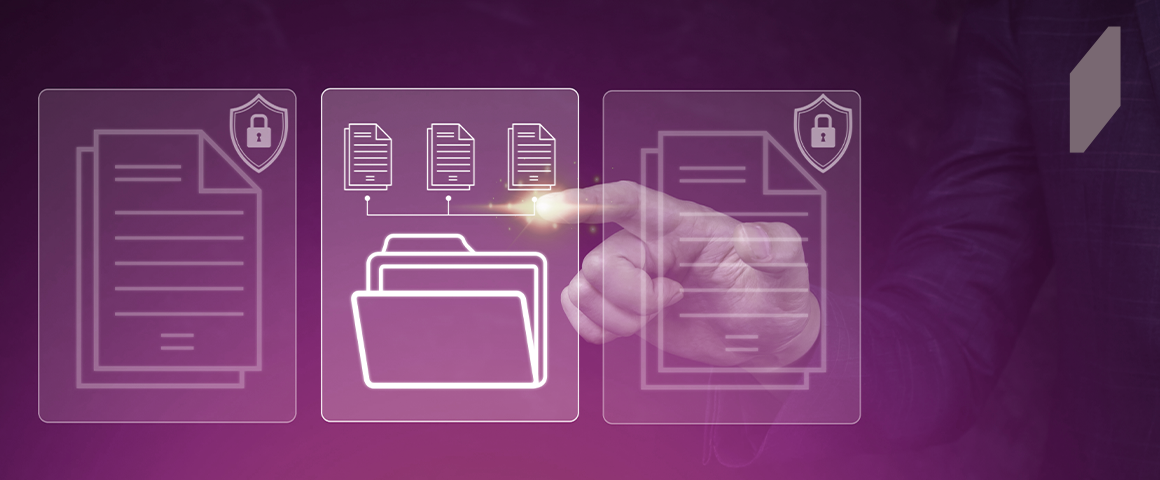NDA Agreement & CLMs – What is an NDA? How Do NDAs Work?
Non-disclosure agreements (NDAs), or confidentiality agreements, are essential legal tools to safeguard sensitive information shared between parties. These contracts outline the responsibilities and obligations of the individuals or organizations involved, ensuring that confidential data remains secure and is used only for its intended purpose. NDAs are vital in various business relationships, such as partnerships, employee contracts, and vendor agreements.
By establishing clear guidelines and expectations, NDAs help to build trust and foster productive collaborations while minimizing the risk of unauthorized disclosure or misuse of proprietary information. Understanding the importance and proper use of NDAs is key to maintaining the integrity and competitiveness of any business.
What is an NDA?
An NDA is a legally binding contract that defines the confidential information to be shared between parties and establishes the terms under which this information must be protected. The purpose of an NDA is to prevent the unauthorized disclosure of sensitive data, such as trade secrets, intellectual property, financial records, or customer information.
When signing an NDA agreement, the parties agree to maintain the confidentiality of the specified information and to use it only for the reasons stated within the contract. NDAs typically outline the duration of the confidentiality obligations, the consequences of a breach or NDA violation, and any exceptions to the confidentiality requirements.
These agreements serve as a foundation for trust and open communication in business relationships, enabling parties to share necessary information while safeguarding their competitive advantages and reputations. By clearly defining the scope and expectations of confidentiality, NDAs help to minimize misunderstandings and provide legal recourse in the event of a breach.
Unilateral vs. Mutual NDAs
NDAs can be classified as either unilateral or mutual agreements. In a unilateral NDA, also known as a one-way NDA, only one party discloses confidential information, and the other party is obligated to protect it. This type of agreement is common in situations where a company shares sensitive data with an employee or a potential investor.
On the other hand, a mutual NDA involves both parties disclosing confidential information to each other, and both are bound by confidentiality obligations. Mutual NDAs are frequently used in partnerships, joint ventures, or mergers and acquisitions, where both parties need to exchange sensitive information.
Confidential Disclosure Agreements
In certain industries, such as health and life sciences, Confidential Disclosure Agreements (CDAs) are used instead of NDAs. CDAs serve a similar purpose but tend to be more stringent and heavily negotiated than standard NDAs due to the sensitive nature of the information being shared.
Key Components of an NDA
A well-drafted NDA should clearly identify the parties involved, define the confidential information, outline the obligations and restrictions of the receiving party, and specify the duration of the agreement. When learning how to make an NDA, it is crucial to ensure that each of these elements is addressed in detail to minimize the risk of misinterpretation or ambiguity. By including these key components, an NDA can provide a strong foundation for protecting confidential information in various business relationships.
Parties and Purpose
The first component of an NDA is the identification of the parties involved in the agreement. This section should state the legal names and roles of each party, such as the disclosing party and the receiving party.
Additionally, the purpose of the NDA should be explicitly stated, outlining the reason for sharing confidential information. For example, the purpose may be to evaluate a potential business partnership, collaborate on a project, or facilitate an employment relationship. By clearly defining the parties and the purpose of the NDA, the agreement establishes the context and scope of the confidentiality obligations.
Definition of Confidential Information
One of the most critical components of an NDA is the definition of confidential information. This section should provide a clear and comprehensive description of the types of information that are considered confidential under the agreement.
Confidential information may include, but is not limited to, trade secrets, financial data, customer lists, marketing plans, technical specifications, and intellectual property. The definition should be tailored to the specific needs of the parties and the nature of the business relationship.
It is important to strike a balance between being overly broad, which may make the agreement difficult to enforce, and being too narrow, which may leave important information unprotected. In some cases, the definition may also include exceptions, such as information that is already public knowledge or that the receiving party independently develops.
Obligations and Restrictions
The obligations and restrictions section of an NDA outlines the responsibilities of the receiving party in protecting confidential information. This section should specify that the receiving party must keep the information confidential and use it only for the purpose stated in the agreement. The receiving party may be required to implement reasonable security measures to prevent unauthorized access, disclosure, or use of the information.
The NDA may also restrict the receiving party from reverse engineering, decompiling, or disassembling any products or materials related to confidential information. In addition, the agreement should address the receiving party’s obligations in the event of a breach, such as promptly notifying the disclosing party and taking steps to mitigate any harm caused by the disclosure.
In some cases, the NDA may include non-solicitation or non-compete clauses to further protect the disclosing party’s interests. By clearly defining the obligations and restrictions, an NDA can help to minimize the risk of misuse or unauthorized disclosure of confidential information.
Term and Termination
The term and termination section addresses how long do NDAs last and the conditions under which they can be terminated. The duration of an NDA can vary depending on the nature of the business relationship and the sensitivity of the confidential information. Some NDAs may have a fixed term, such as one year or five years, while others may remain in effect indefinitely until terminated by either party.
The agreement should also specify the obligations of the receiving party upon termination, such as returning or destroying all confidential materials and ensuring that any individuals who had access to the information continue to maintain confidentiality. By clearly defining the terms and termination conditions, an NDA can help to ensure that confidential information remains protected even after the business relationship has ended.
How Do NDAs Work in Practice?
Understanding when to use NDAs and how to manage them effectively is crucial for minimizing risks and ensuring the success of business relationships.
When to Use an NDA
NDAs are commonly used in situations where sensitive information needs to be shared between parties. This can include discussions related to potential partnerships, collaborations, or investments, where the parties need to evaluate confidential data before making a decision. NDAs are also frequently used when hiring employees or engaging contractors (freelancers) who will have access to proprietary information.
In the life sciences industry, NDAs are particularly important due to the sensitive nature of research and development data, as well as the need to protect intellectual property rights. For example, when a pharmaceutical company collaborates with a contract research organization (CRO) to conduct clinical trials, an NDA is essential to safeguard the confidentiality of the study protocol, results, and any proprietary information shared between the parties.
NDAs help to create a secure environment for sharing information, allowing parties to explore opportunities and make informed decisions while minimizing the risk of unauthorized disclosure.
Best Practices for Managing NDAs
When creating an NDA, it is essential to clearly define the scope of confidential information and tailor the agreement to the specific needs of the business relationship. The parties should carefully review and negotiate the terms of the NDA to ensure that it provides adequate protection without being overly restrictive.
Once an NDA is in place, it is crucial to implement appropriate security measures to protect confidential information, such as limiting access to sensitive data and using secure communication channels. Regular training and communication with employees and partners can help to ensure that everyone understands their obligations under the NDA and the importance of maintaining confidentiality.
It is also advisable to maintain accurate records of all NDAs, including the parties involved, the duration of the agreement, and any specific terms or conditions. This can be achieved through the use of contract management software, which can help to streamline the creation, storage, and tracking of NDAs. Regular audits and reviews of NDAs can help to identify any potential risks or areas for improvement, allowing parties to take proactive steps to address any issues.
By following these best practices, organizations can effectively manage their NDAs, reducing the risk of breaches and ensuring the protection of their valuable confidential information.
NDA Violations and Enforcement
NDA violations occur when a party breaches the terms of the agreement by disclosing confidential information to unauthorized parties (which goes against the purpose of the NDA) or using the information for purposes not permitted under the agreement. Such breaches can have serious consequences, including financial damages, reputational harm, and legal liabilities.
Remedies for NDA Breaches
When an NDA violation occurs, the non-breaching party may seek various legal remedies to enforce the agreement and recover damages. One common remedy is to seek an injunction, which is a court order that prohibits the breaching party from further disclosing or using confidential information.
The non-breaching party may also pursue monetary damages to compensate for any losses suffered as a result of the breach, such as lost profits or the cost of developing new products or services. In some cases, the NDA may specify liquidated damages, which are predetermined amounts that the breaching party must pay in the event of a violation.
Additionally, the non-breaching party may have the right to terminate the agreement and any related business relationships. The specific remedies available will depend on the terms of the NDA and the applicable laws governing the agreement.
Preventing NDA Violations
Preventing NDA violations is crucial for maintaining the confidentiality of sensitive information and avoiding the potential consequences of a breach. One key strategy is to carefully vet potential partners, employees, or contractors before sharing confidential information, to ensure that they are trustworthy and committed to maintaining confidentiality.
Providing regular training and reminders about the importance of confidentiality can help to reinforce the obligations under the NDA and minimize the risk of inadvertent disclosures. Implementing strong security measures, such as access controls, encryption, and monitoring systems, can also help to prevent unauthorized access to confidential information.
Additionally, it is important to have clear policies and procedures in place for handling and disposing of confidential materials, to reduce the risk of accidental disclosures. Regular audits and reviews of confidentiality practices can help to identify potential vulnerabilities and ensure that appropriate safeguards are in place.
By taking proactive steps to prevent NDA violations, organizations can protect their valuable confidential information and minimize the risk of costly breaches.
The Role of CLM Software in Managing NDAs
Contract Lifecycle Management (CLM) software is a powerful tool for managing NDAs and complementary legal agreements. CLM software provides a centralized platform for creating, storing, and tracking NDAs throughout their lifecycle.
With CLM software, organizations can automate many of the manual processes associated with managing NDAs, such as creation, negotiation, and execution. This not only saves time and reduces the risk of errors, but also allows companies to maintain better control over their confidential information. CLM software can also provide valuable insights into NDA performance and help identify potential risks or areas for improvement.
Benefits of Using CLM for NDAs
One of the main benefits of using CLM software for NDAs is increased efficiency. CLM software can automate many of the manual tasks associated with creating and managing NDAs, such as creating, reviewing, and approving agreements. This can significantly reduce the time and effort required to manage NDAs, allowing legal and business teams to focus on more strategic activities. CLM software can help ensure consistency and accuracy across all NDAs, reducing the risk of errors or omissions that could lead to litigation.
Another key benefit of CLM software is improved visibility and control of NDA processes. With CLM software, companies can easily track the status of each NDA, including who has access to confidential information and when the agreements will expire. This can ensure that all parties are fulfilling their obligations under the agreement and that confidential information is adequately protected. CLM software can also provide valuable insights into the performance of NDAs, such as which clauses are most frequently negotiated or challenged, allowing companies to optimize their NDA processes over time.
CLM software can also help reduce the risk of NDA violations and legal disputes. With automated workflows and built-in compliance checks, CLM software can help to ensure that all NDAs are properly executed and that confidential information is being handled under the terms of the agreement. In the event of a breach or dispute, CLM software can provide a clear audit trail of all NDA-related activities, which can be invaluable in legal proceedings.
Key Features to Look for in CLM Software
When evaluating CLM software for managing NDAs, there are several key features to look for. First and foremost, the software should provide a user-friendly interface for creating and managing NDAs. This should include templates and clause libraries that can be easily customized to meet the specific needs of each agreement. The software should also support collaboration and negotiation, allowing multiple parties to review and comment on NDAs in real-time.
Another important feature to look for is robust security and access controls. CLM software should provide granular permissions and authentication measures to ensure that only authorized parties can access confidential information. The software should also employ encryption and other security measures to protect sensitive data both in transit and at rest.
CLM software should be able to integrate with other tools and platforms used by the organization, such as customer relationship management (CRM) software, enterprise resource planning (ERP) systems, and e-signature providers. This can help to ensure that NDA-related data is accurate and up-to-date across all systems and can also streamline workflows and reduce the risk of errors.
Reporting and analytics capabilities are also essential for optimizing NDA processes over time. CLM software should provide detailed metrics and dashboards that allow organizations to track key performance indicators (KPIs) related to NDAs, such as cycle times, negotiation rates, and compliance levels. This can help to identify areas for improvement and enable data-driven decision-making around NDA management.
Conclusion
NDAs play a critical role in safeguarding sensitive data and enabling secure collaborations between parties. However, managing NDAs can be a complex and time-consuming process, particularly for organizations that deal with a high volume of agreements.
CLM software offers a powerful solution for streamlining NDA management and reducing the risk of legal disputes. With features like automated workflows, secure storage, and access controls, and robust reporting and analytics, CLM software can help organizations optimize their NDA processes and better protect their valuable confidential information.
For contract managers and company leaders looking to improve the efficiency and effectiveness of their NDA management, investing in a CLM solution can provide significant benefits. If your organization handles a large number of NDAs, Malbek’s AI-powered CLM solution can save you a lot of time by automating the management process from storage to execution and negotiation. Book a call with us here!






